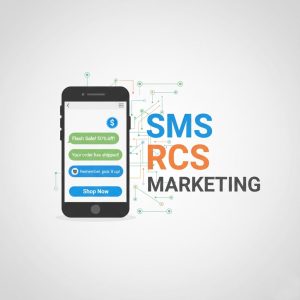What is Sales Enablement and Why it Matters

Sales enablement is a term you’ve probably heard tossed around in business meetings and strategy sessions, but what does it actually mean? And how can it transform your sales team into a high-performing powerhouse?
This blog will demystify, explore its strategies and tools, and explain why every business, from startups to enterprise-level organizations, needs to adopt this crucial approach to stay competitive. Whether you’re a sales manager, a marketing professional, or a business executive, you’ll walk away with clear, actionable insights on how to kick-start sales enablement within your team.
Understanding Sales Enablement
Sales enablement is the process of equipping your sales team with the knowledge, tools, and resources they need to sell more effectively. This involves providing access to insights, content, and training so that sales professionals are prepared to engage with prospects confidently and close deals efficiently.
But sales enablement isn’t just about putting together a few training sessions or tossing some brochures to your team. It’s a strategic approach that bridges the gap between sales and marketing, fostering alignment and collaboration. With the right enablement in place, your team operates as one cohesive unit focused on driving revenue.
Why is Sales Enablement Important?
Organizations with sales enablement strategies in place tend to outperform those without them. According to HubSpot, businesses with aligned sales and marketing teams achieve 208% higher marketing revenue. That’s because sales enablement ensures that sellers have precisely what they need, exactly when they need it.
Here’s why sales enablement makes a difference:
- Improves sales efficiency by reducing time spent searching for resources.
- Boosts buyer engagement through tailored strategies and relevant content.
- Enhances training and development for stronger sales skills.
- Strengthens cross-functional alignment, particularly between sales and marketing.
The result? Higher conversion rates, shorter sales cycles, and increased revenue.
The Core Pillars of Sales Enablement
Building a successful sales enablement program revolves around these core components:
1. Content Creation and Management
One of the biggest challenges salespeople face is accessing the right content at the right moment.
- Educational content: Case studies, whitepapers, and eBooks to build trust with prospects.
- Presentation materials: High-quality decks and videos to explain your product or service.
- Buyer personas and scripts: Armed with insights, salespeople can better address pain points and offer tailored solutions.
Taking it a step further, content should be easily accessible through a central repository or CRM for seamless retrieval.
2. Training and Development
Even the best salespeople need to sharpen their skills. Sales enablement includes:
- Onboarding programs: Equip new hires with product knowledge, market insights, and selling techniques early on.
- Ongoing coaching: Keep your team updated with the latest selling practices and tools.
- Certifications and assessments: Reinforce learning and measure progress over time.
Interactive training using AI-driven platforms like Salesforce or Lessonly can make these programs more engaging and effective.
3. Technology and Tools
Modern sales enablement relies on tech to maximize efficiency. Some must-have tools include:
- CRM Software: Platforms like HubSpot or Salesforce store and manage customer data, streamline sales processes, and track pipeline metrics.
- Sales Engagement Tools: Outreach and SalesLoft allow sales reps to automate emails, calls, and follow-ups.
- Analytics Platforms: Tools like Gong.io enable managers to analyze conversations and refine approaches.
When suited to your business, these tools improve productivity, giving sales teams more time to focus on closing deals.
4. Insights and Analytics
Data drives decisions. Sales focuses on capturing and analyzing data to:
- Identify high-performing strategies and replicate success.
- Track prospects’ behavior and engagement across multiple touchpoints.
- Evaluate sales performance—including win rates, deal velocity, and conversion metrics.
Knowing what works and what doesn’t allows marketers and sellers to continuously refine strategies for maximum effectiveness.
How Sales Enablement Aligns Marketing and Sales
One of the biggest pain points in many organizations is the disconnect between sales and marketing. Sales enablement bridges this gap by fostering collaboration in several ways:
- Shared goals: Both teams align on revenue targets and ideal customer profiles.
- Content alignment: Marketing provides the resources sellers need to address challenges at every stage of the buyer’s journey.
- Feedback loops: Feedback from sales helps marketing refine campaigns and produce better-targeted content.
This alignment ensures that sales isn’t left isolated, and marketing efforts lead to tangible business outcomes.
Read our latest blog : Build Landing Page for Digital Products
Steps to Implement Sales Enablement
Here’s a roadmap to launching an effective sales enablement strategy in your organization:
- Assess your team’s needs: Identify gaps in knowledge, content, and tools.
- Define clear objectives: Determine what success looks like for your sales enablement initiatives.
- Build a sales enablement team: Designate roles for managing training, content, and analytics.
- Invest in technology: Equip your team with essential tools like CRMs and learning platforms.
- Create a feedback loop: Continually collect insights from sales reps and use them to refine processes.
Start small, measure results, and gradually expand your enablement initiatives as you see what works best for your team.
Real-Life Sales Enablement Success Stories
Companies adopting sales enablement are reaping massive rewards. Here are two examples to demonstrate its impact:
- LinkedIn: The platform implemented a robust sales enablement program that included training and personalized content tools. The result? Their global sales team increased productivity and built stronger relationships with buyers.
- HubSpot: HubSpot’s inclusion of video-guided training and content repositories allowed their sales reps to close deals faster while providing consistent messaging across markets.
These stories show how investing in enablement transforms business outcomes.
Unlock Your Team’s Full Potential
Sales enablement isn’t just another business buzzword; it’s a proven strategy that drives measurable results. By equipping your sales team with the content, training, and technology they need, you’re setting them up to succeed in a competitive marketplace.
Whether you’re just dipping your toes into sales enablement or looking to refine an existing strategy, the key lies in collaboration between sales and marketing and a commitment to continuous improvement.
Get started today and watch as your team transforms into a well-oiled, revenue-generating machine.






